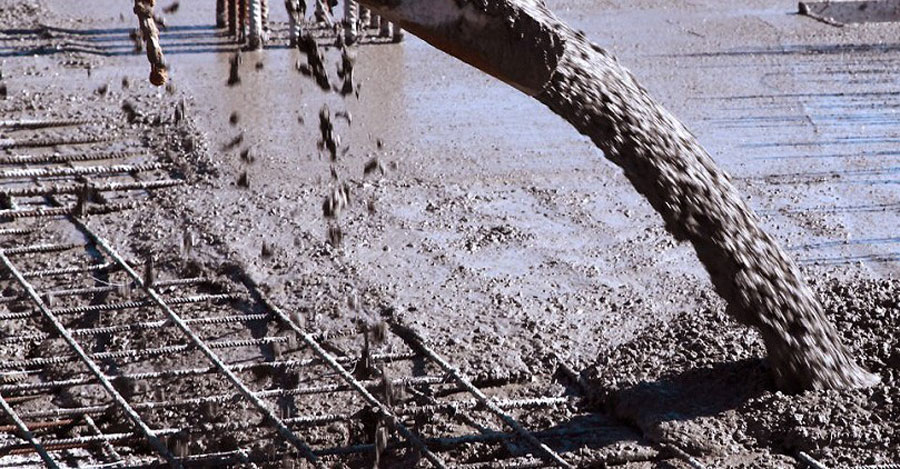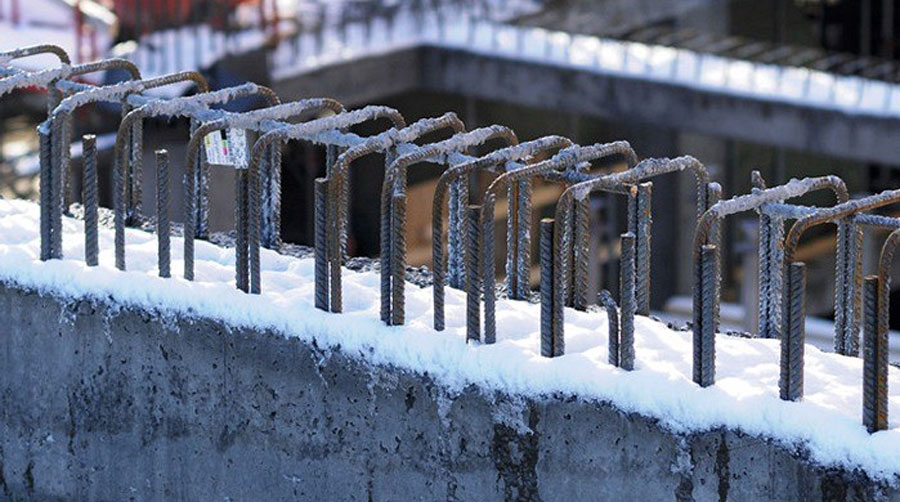When the average air temperature during concrete pouring is below + 5 ° C for three days consecutively, it creates cold weather conditions for pouring.

 The hydration of the cement slows down in cold weather as the temperature decreases. Slowing hydration also reduces the strength gain of the concrete. Mold removal times are longer.Freezing of fresh concrete especially during setting may create very dangerous damages.
The hydration of the cement slows down in cold weather as the temperature decreases. Slowing hydration also reduces the strength gain of the concrete. Mold removal times are longer.Freezing of fresh concrete especially during setting may create very dangerous damages.
Turkish Standards have brought some temperature limitations regarding these conditions. (For example, for a concrete with 31,5 mm Biggest Aggregate Grain Size – when the outside temperatures are between -1°C ~ 5 °C, the temperature of the fresh concrete mixture should be at least 15 °C, and the placement temperature should be at least 13 °C).
To prevent damaging of concrete during cold weathers, it is necessary to protect the appropriate initial temperature of the concrete for a certain period of time until reaching a certain level of endurance, or it should be allowed to fall down until a certain value.
The concrete should be protected against frost until the pressure endurance reaches a value of 50 kg/cm² (not applicable to saturated concrete). The protection period required for concrete at the appropriate placement temperature is at least 3 days.
Precautions that can be taken during concrete casting in cold weather can be listed as follows;
♦ The minimum amount of water required for the targeted consistency should be used. Low consistencies should be preferred.
♦ Cements with high hydration heat and high early strength should be used. Low water/cement ratio should be preferred.
♦ Concrete mixture water can be heated to a certain degree. (Up to 70 - 80 ° C).
♦ Aggregates can also be heated.
♦ Chemical admixtures which accelerate the setting and provide early strength should be selected. Antifreeze can be used if necessary.
♦ Molds can be insulated before pouring. Immediately after casting, the open surfaces of the concrete are covered with insulating sheathing to protect the hydration heat.
♦ Molds must be heated at critical temperatures (below -5 ° C). Parts where the concrete is poured should be covered with an impermeable cover to keep the temperature of the air inside at least + 5 ° C and a heating system should be created.
♦ In conditions where frequent freezing - thawing occurs, protection should be extended by 7 to 14 days in the case of sudden temperature changes.
♦ It would be advantageous to pour concrete during day time when the temperatures are warmer.
♦ Mold removal time should be extended. The concrete strength should be determined by the samples taken from the concrete pouring which are cured in the same conditions as the concrete in the structure and the mold should be allowed to be removed according to the results.

